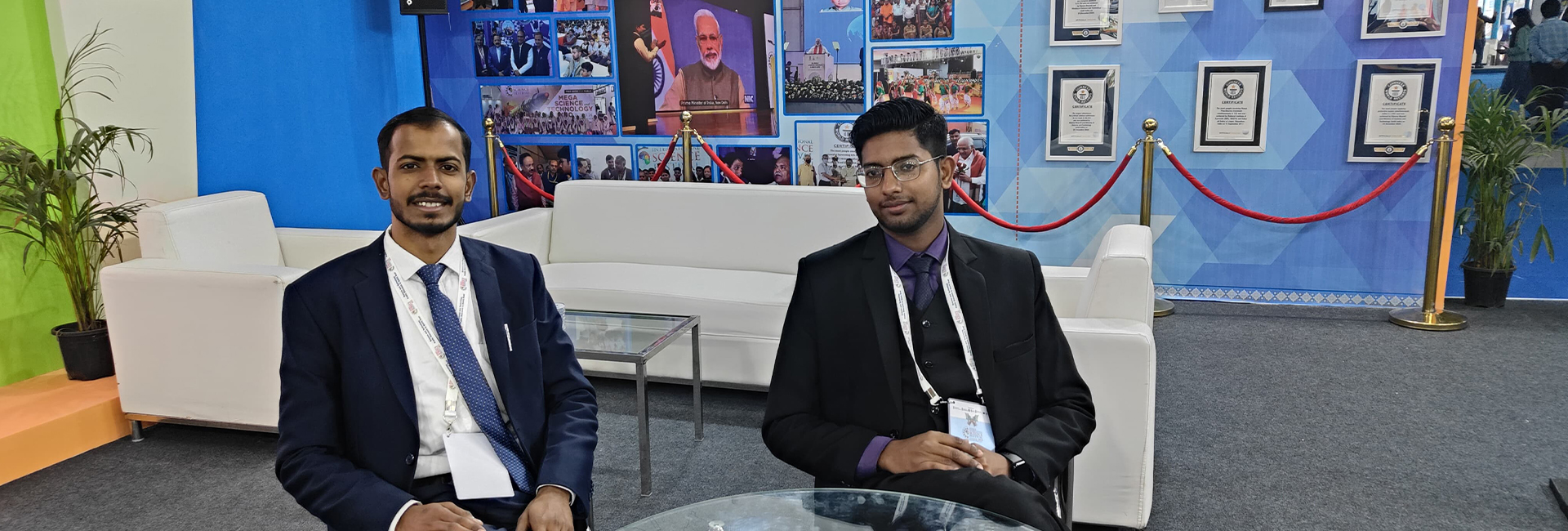(August 13, 2024) It was in June this year that Sunita Williams and her co-astronaut Butch Wilmore boarded Boeing’s Starliner capsule for its first crewed mission. Originally slated to spend just eight days in space, they have now been stranded for over 50 days due to technical issues. Fresh reports suggest that their rescue may be delayed, potentially leaving them in space until February 2025, causing concern about their safe return, health risks and fuelled debates on the role of humanoid robots in space exploration. Amidst these discussions, students at Purdue University have taken the initiative to form the Humanoid Robot Club, becoming the first student group to build a humanoid robot designed for space missions. “When you are in space or exploring an active volcano or conducting deep-sea research, using robotics limits the loss of life in such scenarios,” says Aarav Garg, the club’s president. “Our biggest motivation is the idea that if something goes wrong in space, it’s a robot at risk — not a human. This significantly reduces the potential for loss of life, which is one of the reason why a robot should exist in the first place.”
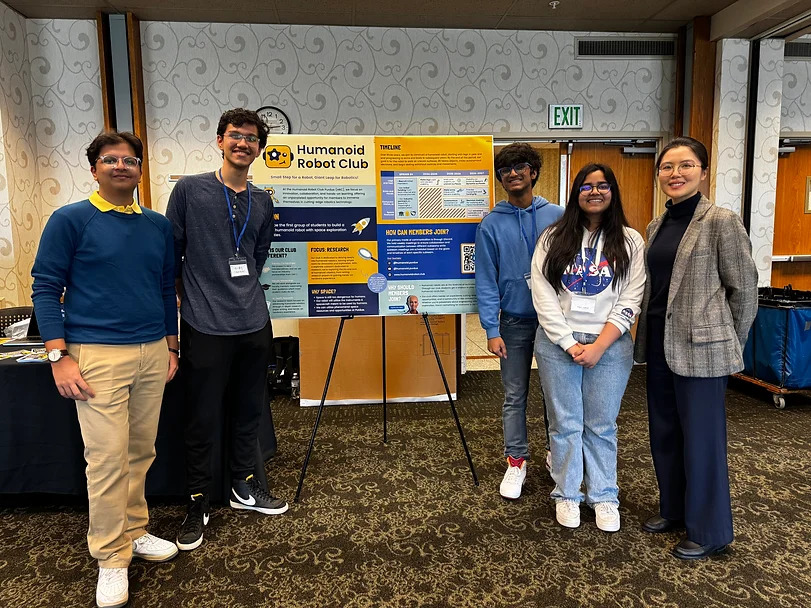
Humanoid Robot Club
The 18-year-old and his friend Riddhi Gupta founded the Humanoid Robot Club in the spring session of 2024 after watching a video of Boston Dynamics, a company that builds humanoid robots. It sparked an epiphany that despite Purdue’s diverse range of student clubs, none focused on humanoid robots. “Upon research, we found that there is no student club in the entire US that delves into humanoid robots. That’s when we decided to launch our own since most existing efforts focus on research, but we wanted to actually build one,” Aarav tells Global Indian.
Aiming for space
Their vision is ambitious — to be the first group of students to build a walking humanoid robot for space exploration. “No one else in the world is currently doing this,” Aarav emphasises. Launched in March 2024, the club has already attracted over 400 members from various majors and degrees. “Ninety percent of our members are undergraduates, mostly from mechanical and electrical engineering,” Aarav explains. “More than just a club, it’s like a startup where students from diverse backgrounds, united by a shared enthusiasm for innovation, collaborate on building a humanoid robot.”
The teenage innovator and entrepreneur, who founded a startup called TechNuttiez while still in school, has long been passionate about coding and innovation. His move to Purdue University in the US last fall felt like a natural extension of his interest in robotics. “As a freshman, I was excited to explore new opportunities. With my background in entrepreneurship and robotics from India, I quickly secured leadership positions in two different technology clubs at Purdue within just a month of starting university. During my first semester, I got exposure on how clubs operate at Purdue, which gave me a great head start,” says Aarav, who ended up starting a new club at Purdue in his second semester.
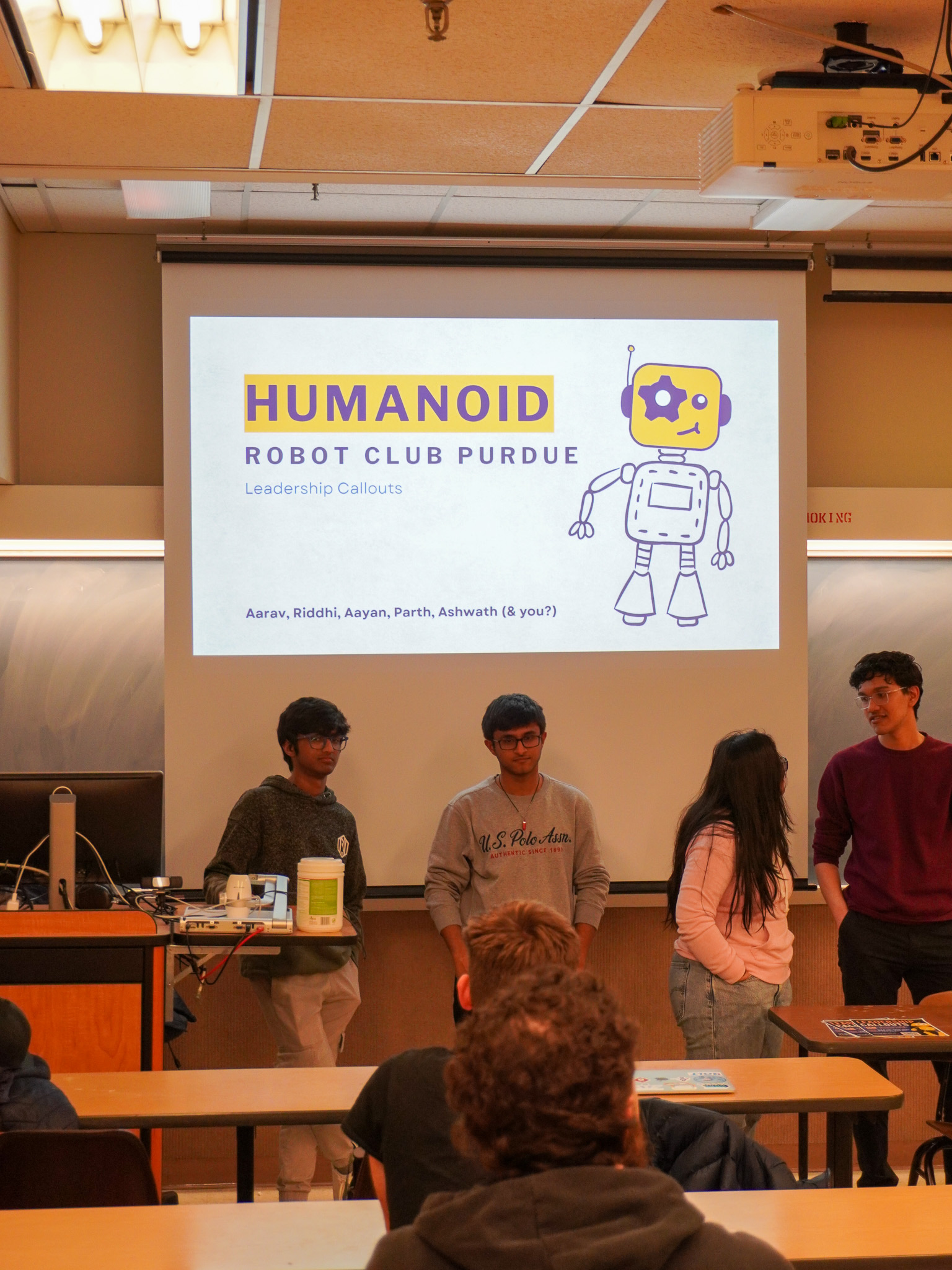

Taking the legacy forward
Launching a club that gravitated towards the field of space came naturally to Aarav and his team, given Purdue’s reputation as one of the best universities in aerospace in the world. “Neil Armstrong, the first person to walk on the Moon, and Eugene Cernan, the last man to walk on the Moon, are both alumni of Purdue University. Right now, we’re the leading producer of top astronauts in the US,” reveals Aarav, adding, “Each month, we have the opportunity to meet an astronaut who has been to the International Space Station, so it was only fitting that we ventured into this field.”
Armed with the knowledge that humanoid robots can redefine the landscape of space exploration by offering versatility and adaptability in extraterrestrial environments, Aarav was keen to build a robot with human-like capabilities that can navigate complex terrain, manipulate tools, and interact with surroundings with agility. “They can work alongside humans too.”
After spending the spring and summer semesters organising and planning, the team is eager to start building the robot in the upcoming fall semester. Having raised $95,000 in sponsorship from departments at Purdue, brands like Autodesk, Altium, and Unitree Robotics, and ten official partners, the Humanoid Robotics Club is using the fund to buy equipment for their lab. They recently signed an MOU to secure a workspace on campus at the newly opened John Martinson Lab of Entertainment and Engineering. “We’ll have a dedicated space to set up our equipment, including three 3D printers, and where all the members will work. It’s a small lab that we are excited to build.”
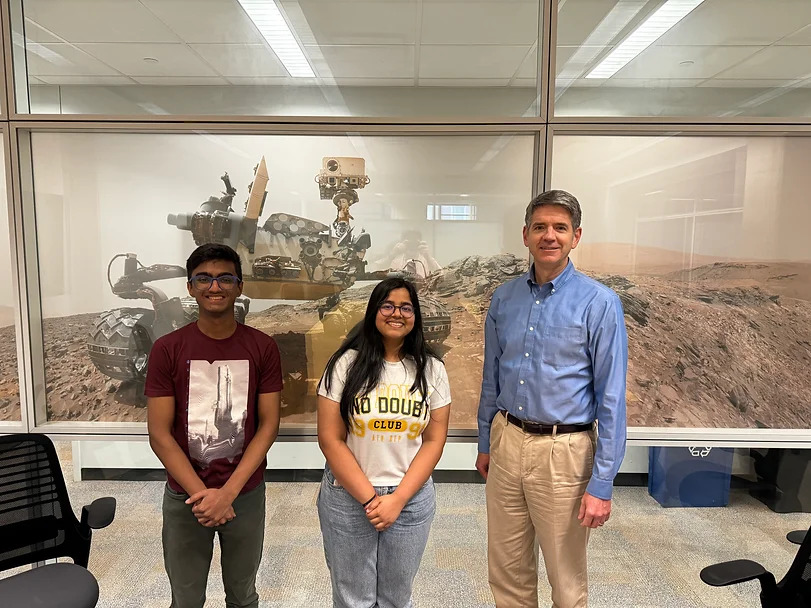

Aarav Garg and Riddhi Gupta with the head of AAE at Purdue
Securing key support
Starting a new club at Purdue meant having the right allies, and they found the best one in Professor Yan Gu, who signed up as their primary advisor. Being the professor of mechanical engineering and head of the TRACE lab, the only lab at Purdue that works with humanoid robots, made her the perfect contender for the position. “I waited outside her office for three hours just to pitch the idea,” Aarav recalls. His dedication paid off when, after their meeting, she agreed to become the faculty advisor. “We had so many sleepless nights preparing our pitches,” he adds. But the club members continued to reach out to the deans of other engineering departments at Purdue, and in no time, they had seven faculty advisors onboard, a rare feat for a student club which is usually run with one-two advisors. “We have a faculty advisor from every department of engineering,” beams Aarav with pride.
Building the future
This month the students will return to the university from their summer break, energised to take up the mammoth task of building the humanoid robot. “We’ve divided the robot’s various body parts into separate projects,” explains Aarav. “In our first year, we’ll focus on the legs, aiming to build legs that can walk by the end of the year. Next year, we’ll introduce the arms project, where some team members will work on constructing the arms while others continue refining the legs. In the third year, our focus will shift to vision systems and space-related challenges like zero gravity, making the robot autonomous so it can navigate an entire room on its own. Each year, we’ll add new projects and continue fine-tuning the existing ones.”
A great deal of planning went into the project, leaving little room for error. However, the biggest challenge for Aarav has been balancing his managerial responsibilities with his passion for actually building the robot. “Juggling two different roles at once can be quite overwhelming,” he admits. “But with leadership appointed in key roles, I now want to focus primarily on building the robot. We’ll be working on it every day, that’s my agenda for the next three years,” says Aarav, who is majoring in robotics at Purdue University. “This allows me to constantly learn and apply my knowledge, which is incredibly rewarding.”
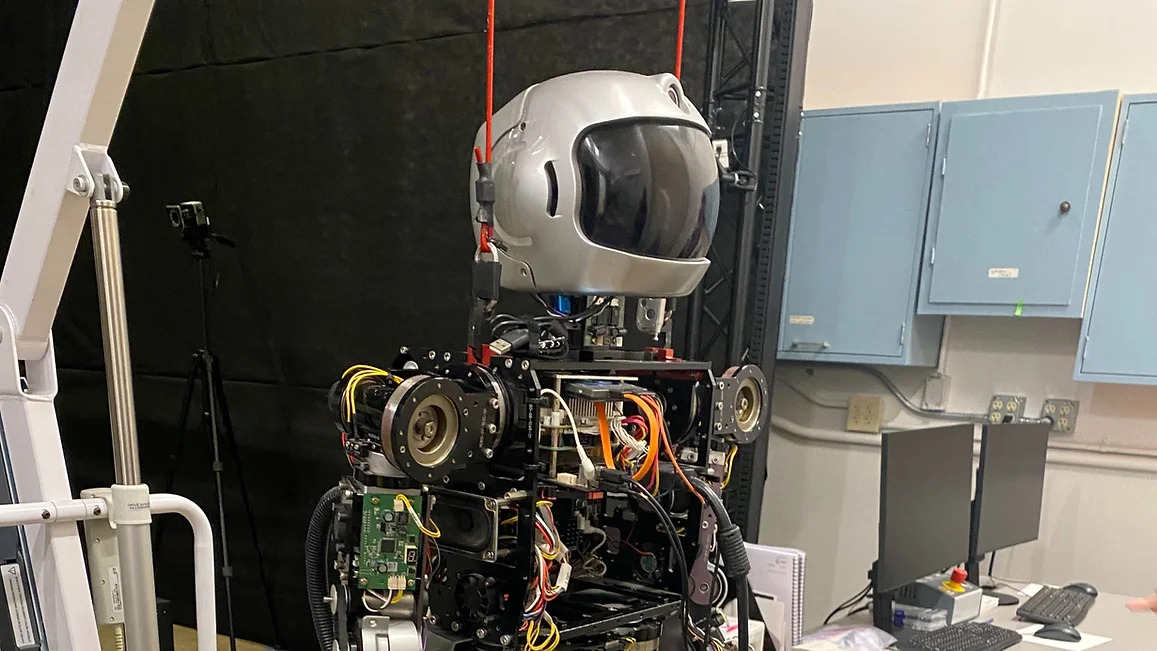

Team Humanoid Robot Club working on the humanoid robot HUBO
Future goals – Looking to revolutionise space exploration
With his startup experience back home, Aarav brought the expertise needed to lead the club. “I’m replicating the model, but on a much larger scale,” he explains. The knowledge and dedication of his team have impressed the leadership at Purdue University. “They see us as students on a mission. We don’t just operate as a club; we approach it like a startup and a research lab,” Aarav says.
With only three years left at Purdue, Aarav and his team are determined to build a functional humanoid robot before they graduate. “Our goal is to have a basic walking humanoid robot completed by the spring of 2027,” Aarav shares, expressing his hope that the robot will one day make its way to space. “We aim to build the robot, present it to NASA or SpaceX, and ensure that strong leadership continues the project even after we graduate. We understand this isn’t just a three-year endeavour and may require several more years. But once it’s ready, we believe it will revolutionise space exploration,” he signs off.
- Follow Aarav Garg on LinkedIn




